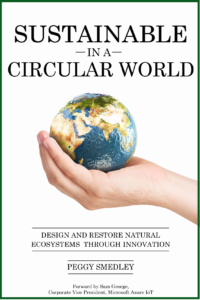Smart meters are on the rise. With that growth comes an increase in data, creating new considerations for technology companies, utilities, and customers. I can’t help but wonder where we are with energy today and where we are headed in the future. Here’s the numbers.
Allied Market Research suggests the global smart-meter market size was valued at $21.79 billion in 2020 and should soar to $54.34 billion by 2030, growing at a rate of more than 10.10% from 2021 to 2030, due to a number of factors in the market.
Guidehouse Insights concurs, pointing to the U.S., China, and Western Europe being at the forefront of this movement. It is estimating smart meters will serve nearly 62% of electric utility customers across the United States and projects penetration will approach a whopping 90% by 2028. Before you say holy cow, the caveat should be the full value proposition behind smart-meter deployments has not been realized yet. Bingo!
A Guidehouse Insights whitepaper waves its finger, stating alongside growth of smart meters will come a surge in data. Released at the end of last year, it indicates devices can now measure and monitor the waveform in addition to energy, current, and voltage. This data captures these measurements at sub-second intervals. This will result in utilities being absolutely inundated with data.
Enter AI (artificial intelligence) analytics and edge computing. Observers are anticipating (or expecting) descriptive, predictive, and prescriptive analytics to assist in uncovering the insights necessary for both utilities and their customers. The edge expediates this, as it generates the field information and can help make time-sensitive decisions. The edge, then, becomes critical to the future of utilities.
With all this in mind, Guidehouse Insights poises other significant questions that has been circulating in this community. What if AI-enabled analytics capabilities were applied directly to the realtime data streams being captured inside the device itself? What new sources of value could be delivered to both the utility and its customers?
The answer comes in the form of inside-the-meter analytics architectures, which were developed by solution providers in response to the availability of new data types and high-resolution data capture. Use cases are endless, as I like to say. This could lead to outage detection and restoration, voltage monitoring, transformer load management, feeder balancing, demand-side management, theft detection, active demand response, and greater energy efficiency, just to name a few.
Said another way, this would enable utilities to give the data it collects legs, so to speak. Utilities and customers can take immediate action based on the data collected.
This all sounds well and good, but of course as with everything else this comes with a cost. Even with the strides we have made, increased computing power and memory still aren’t limitless. We also have some bandwidth and latency constraints. As with most technologies, we need higher levels of systems integration as well.
Still, the opportunities for energy excite me. If we get this right, we can make big strides to greater energy efficiency in our homes and buildings. There also seems to be some big elephants in the room that we don’t want to really talk about when it comes to open connectivity and transparency. We market open and transparent, but the more research I do, the more I have to ask the question how will an average homeowner be able to accomplish these hefty tasks without a common language/protocol? Simply, if I can’t understand it, then how the heck are the customers adopting all these meters and connected solutions in their homes expected to be tracking all this data? I’m still waiting for someone to help me be able to communicate this clearly to all of you.
Want to tweet about this article? Use hashtags #IoT #sustainability #AI #5G #cloud #edge #futureofwork #digitaltransformation #green #ecosystem #environmental #circularworld


